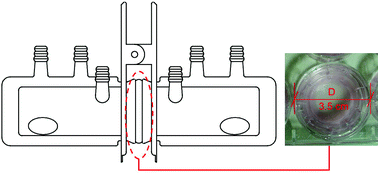Fragrances: from essential oils to the human body and atmospheric aerosols†
Abstract
An overview of the extraction methods is given by comparing headspace, liquid

- This article is part of the themed collection: Cosmetic Ingredients
* Corresponding authors
a
Department of Medical Chemistry, Chia Nan University of Pharmacy and Science, 60 Erh-Jen Road, Section 1, Jen Te, Tainan, Taiwan 71743, ROC
E-mail:
e201466.wang@msa.hinet.net
Fax: +886 6 2667319
An overview of the extraction methods is given by comparing headspace, liquid

 Please wait while we load your content...
Something went wrong. Try again?
Please wait while we load your content...
Something went wrong. Try again?
L. Wang, Anal. Methods, 2013, 5, 316 DOI: 10.1039/C2AY25980J
To request permission to reproduce material from this article, please go to the Copyright Clearance Center request page.
If you are an author contributing to an RSC publication, you do not need to request permission provided correct acknowledgement is given.
If you are the author of this article, you do not need to request permission to reproduce figures and diagrams provided correct acknowledgement is given. If you want to reproduce the whole article in a third-party publication (excluding your thesis/dissertation for which permission is not required) please go to the Copyright Clearance Center request page.
Read more about how to correctly acknowledge RSC content.
 Fetching data from CrossRef.
Fetching data from CrossRef.
This may take some time to load.
Loading related content
